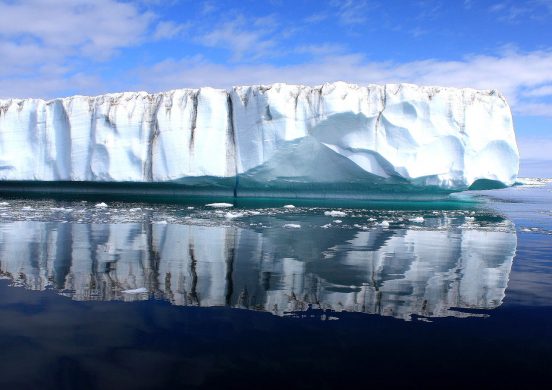Det fremgår af en pressemeddelelse udsendt af Danmarks Tekniske Universitet (DTU) onsdag.
A new study in Science Advances has shown that the melting ice sheet is responsible for a much bigger rise in global sea level than previously assumed.
The Greenland ice sheet has been melting since the latest ice age. Previous estimates were that the melted ice had added around 3.2 metres to global sea levels. But these were incorrect.
“Over the past 23,000 years, the ice sheet has shed ice corresponding to a 4.6-metre rise in sea levels rise. By comparison, the remaining ice corresponds to around 7 metres”, explains Associate Professor Shfaqat Abbas Khan from DTU Space, the lead author of the new study just published in the Science Advances journal.
“This is at a time when the melting is rapidly accelerating, and is currently at a rate of around 300 gigatonnes per year, corresponding to about half a millimetre,” he continues.
No sign of stopping
It is the first time researchers have succeeded in going so far back in time, and the study shows that the melting we are seeing is not an anomaly. It is a process that has been going on for several thousand years and is showing no sign of stopping within the next few centuries.
“There has been a major focus on the melting of the ice sheet over the last 20 years, and we have extensive reliable data from satellites which can give us the figures. But if we want an indication of what is going to happen in the future, we need to go much further back,” explains Professor Kurt Henrik Kjær from the Natural History Museum of Denmark, who co-authored the new study.
Together with colleagues from other countries, they have traced the melting of the ice sheet back over the last 23,000 years, and discovered that earlier estimates have been all wrong.
“The reason the estimates have been wrong is that they were based on geological measurements only covering parts of Greenland. There have been no measurements in large areas of Northwest and Southeast Greenland”, says Shfaqat Abbas Khan.
“Using new geological surveys and a network of GPS stations, we have now mapped the melting for the last regions. They show that just a few glaciers in these areas have contributed about 1.5 metres more to global sea level rises than previously calculated”.
Hot under the ice
Northwest and Southeast Greenland are the areas of the ice sheet where the greatest melting is being observed—melting which has accelerated dramatically during the last 10 years.
The glaciers in these regions currently contribute around 70 per cent of the total meltwater from the ice sheet. Rises in temperature and water level are contributing factors to the melting, but climate changes alone cannot explain why the melting is so great in precisely these areas. Researchers have therefore also investigated what lies below.
The answer can be traced back several million years, when the warm region we know as Iceland today lay below Greenland. The region moved in a south east direction until it was around 200 kilometres from the current Greenland coast, where a volcanic eruption formed Iceland.
This hotspot can still be traced far in under the ice sheet, and there are still pockets of hot material close to the Earth’s surface—and close to the ice, which therefore melts faster.
“One of the areas affected by rapidly accelerating melting is East Greenland’s largest glacier, Kangerlussuaq, just over the hotspot. So there is a lot of hot material under the ice which is generating further acceleration”.
“We are not yet sure where the hot belt ends, but it could be Northeast Greenland, where the ice flows extremely quickly, even from the middle of the ice sheet,” says Shfaqat Abbas Khan.
Bedrock rising
In addition to the rising water level, the enormous loss of ice from the ice sheet means that Greenland itself is rising. In geological terms the rate is very high in some places—up to 12 mm per year around the Kangerlussuaq glacier in Southeast Greenland, but typically around 3-8 mm.
“The Earth’s surface is elastic, with hot liquid material underneath. When there is an ice cap on top, the hot material is pressed down and to the sides, but as the ice melts it will return and the bedrock will rise” says Kurt Henrik Kjær.
“Based on the knowledge we have now about how the ice sheet has melted over the last 23,000 years, we can say that this trend is set to continue. People say that the melting might be due to an anomaly or heat impulse, and may stop in 10 or 20 years. But it won’t. The melting will continue, it’s accelerating, and it will continue to do so for many centuries.”















